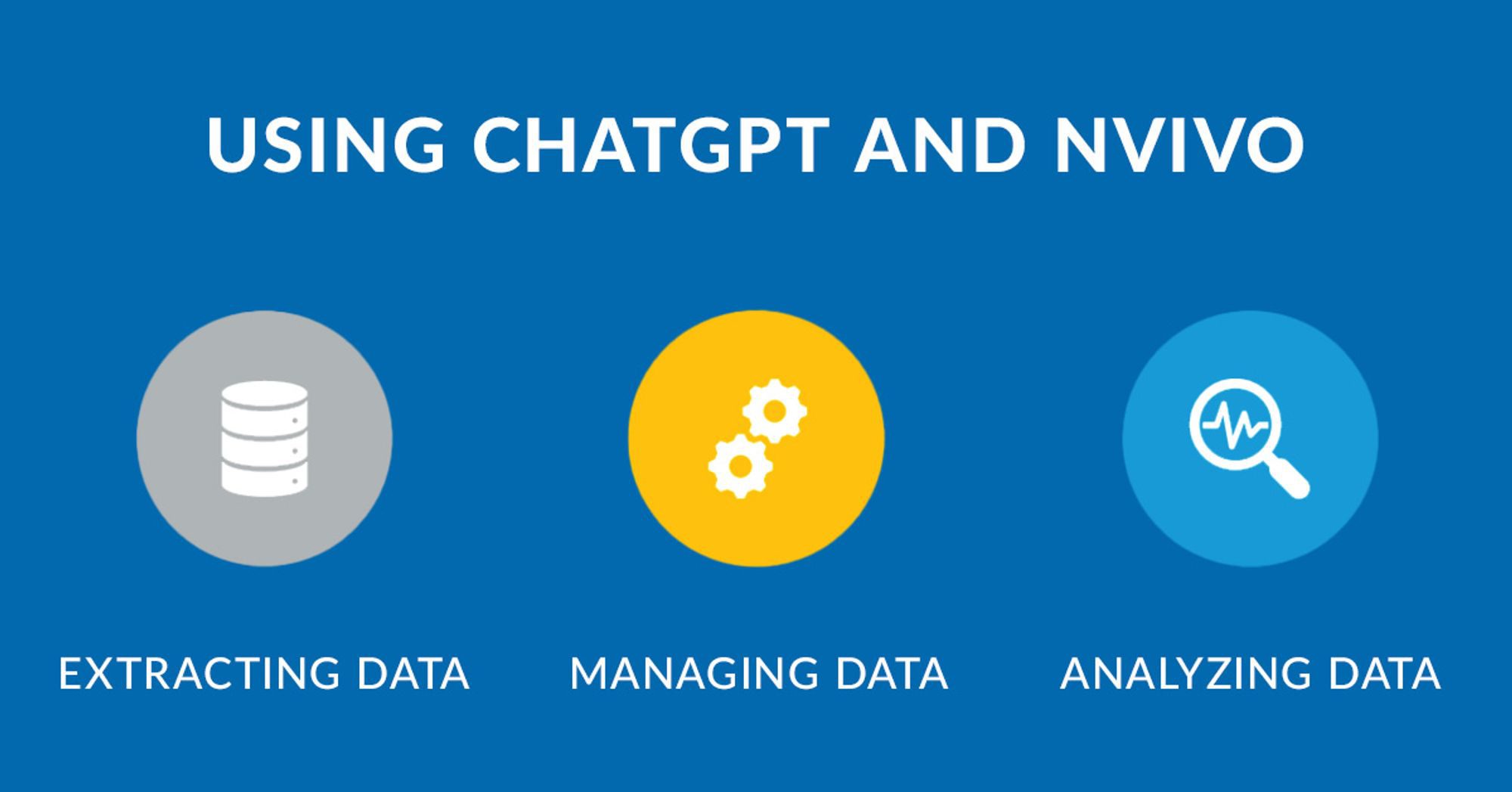
Since its introduction in November 2022, OpenAI’s ChatGPT software started revolutionizing a wide range of industries, from internet searches and customer service to software development and educational programs. It also has the potential to transform research methodologies, particularly in mixed-methods and qualitative research data analysis.
As part of our webinar series on Evolving Research in Qualitative and Mixed Methods, Lumivero recently presented the webinar Revolutionize Your Qualitative Data Analysis with ChatGPT and NVivo, hosted by Philip Adu, PhD.
Dr. Adu is the Founder and Methodology Expert at the Center for Research Methods Consulting. He walked webinar participants through a process for extracting, summarizing, and analyzing large unstructured data sets for qualitative research by combining ChatGPT’s functionality with that of NVivo, Lumivero’s qualitative analysis software. Here’s a brief rundown of topics covered in the webinar, which you can watch on demand at any time.
What is ChatGPT, and What are ChatGPT’s Advantages and Disadvantages?
First, Dr. Adu defined and gave an overview of ChatGPT. Short for “Chat Generative Pre-Trained Transformer,” ChatGPT is the most popular large language model (LLM), a type of artificial intelligence (AI) program.
AI-powered LLMs are trained by feeding them text data from books, websites, and other sources. The LLM analyzes the text data and begins to recognize patterns in human language. Through statistical analysis (and, in the case of ChatGPT, some input from human AI trainers), a LLM can begin to produce original, natural-sounding text in response to a prompt by predicting the next word in a sequence.
There are pitfalls involved with using ChatGPT as a tool for conducting original research. The most important of these is its tendency to produce “hallucinations,” or false information. For example, a 2023 paper in Cureus found that when ChatGPT was asked to generate research proposals, 97 of the 178 references it cited in the proposals it created were either inaccurate or did not exist at all. Dr. Adu also noted that ChatGPT’s output can reflect cultural biases gleaned from its training data, and that the machine learning process behind its decision making isn’t totally transparent.
However, ChatGPT can be used as a text analysis tool. With it, researchers can quickly generate summaries for large volumes of unstructured data such as audio and video files.
Taming Text Analysis with ChatGPT – A YouTube Case Study
In his presentation, Dr. Adu noted a Techjury article which estimates that internet users currently generate 1.145 trillion megabytes of data each day. While researchers are unlikely to have to analyze an entire day’s worth of internet data for a project, they are facing ever-growing amounts of material to categorize.
For example, prior to ChatGPT, researchers who wanted to use YouTube and other video-sharing sites for research had to engage in a time-consuming qualitative research data analysis process. This process included manually generating transcripts from videos, reviewing the transcripts, and then coding information from the transcripts which required hours of a human researcher’s time.
AI-powered text analysis in NVivo can help expedite this process. Dr. Adu demonstrated steps for extracting, managing, and analyzing qualitative data from YouTube with help from ChatGPT. He created a sample research project investigating the strategies behind the success of YouTube content creator MrBeast, who has built an audience of 219 million followers.
First, Dr. Adu walked participants through data extraction.
- Use NVivo’s NCapture feature to import video files into NVivo.
- Import a transcript of the video into NVivo using one of the following options:
- Generate a transcript directly from NCapture.
- Copy and paste YouTube’s auto-generated transcript into a Word file, then import the Word file into NVivo.
Next, he described the data management (or data reduction) process.
- Open your ChatGPT account in a browser tab.
- From YouTube, use the YouTube Summary for ChatGPT web browser extension to create a summary of each video, remembering that ChatGPT has a limit to how much text it can analyze at once:
- Short videos (20 minutes or less) can be summarized completely.
- Longer videos will need to be summarized in chunks, and the browser extension has a feature that breaks down videos for you.
- Prompt ChatGPT to “summarize the following”, and then paste your transcript (or chunk of transcript) into the prompt.
- You can specify how long you want the summary to be, e.g. 1,000 words
Finally, he showed how to analyze data using the transcripts and the ChatGPT summaries.
- Label your research questions.
- Review your summaries and transcripts, pulling out extracts that address a research question.
- Assign codes to each extract.
- Group codes into themes.
The result? A faster, more streamlined qualitative research data analysis process, thanks to the combined power of two revolutionary software programs.
See ChatGPT and NVivo in Action
Interested in learning how you can harness NVivo’s qualitative analysis software and ChatGPT to transform your qualitative or mixed-methods research process? We’ve made the full webinar available on YouTube. Watch the webinar on demand now!

